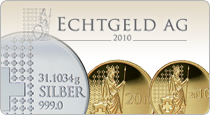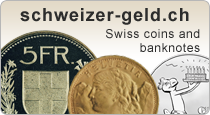
Third Daily Bell Interview
The Daily Bell is pleased to present this exclusive interview with Antal Fekete.
Author: Prof. Antal E. Fekete
Daily Bell: You have pointed out a weakness of the theory of the business cycle according to Mises. Why do people allow themselves to be fooled by money magic over and over again? Why don’t they learn from experience that banks are tempting them with teaser loans, and would lead them to their downfall. They should invest in new projects only after extra careful study leaving a wide margin of safety. Your perspective is that "an improved theory of the business cycle must consider the causality relation between varying prices and varying interest rates." And you explained it thus: "It is reasonable to appeal to the phenomena of economic oscillation that has often been talked about, and economic resonance that has been talked about much less. Here are the details. Apart from leads and lags, rising (falling) prices make interest rates rise (fall) and, conversely, rising (falling) interest rates make prices rise (fall)." This induces oscillation for both prices and interest rates. A huge money-flow from the bond market to the commodity market gets started. When commodity prices reach absurd heights, the money flow abruptly changes direction. Now it flows from the commodity market to the bond market, until bond prices reach absurd heights, when the direction of the flow changes again. And so on and so forth. This is economic oscillation: prices and interest rates both oscillate.
If the frequency of oscillating prices happens to coincide with that of oscillating interest rates, then resonance occurs. It could be dampened or the opposite, self-boosting (also called runaway) resonance. In the latter case there is trouble. The energy-level of the oscillating system increases and gets arbitrarily large. It leads to what is known as hyperinflation, provided that it occurs during the phase when money is flowing from the bond market to the commodity market. Could you elaborate on that?
Antal Fekete: Hyperinflation always means that the velocity of money-circulation is getting ever higher, in fact higher than any given velocity, however large. This may or may not be accompanied by central-bank money printing. The fact is that the underlying flow of existing money from the bond market to the commodity market can do the trick, regardless whatever the central bank does or wishes.
Daily Bell: But then you added: "there is also a second variety forwhich there is no precedent because governments never before experimented with irredeemable currency on the global scale. Up
to now in each episode some governments have preserved their sanity and refused to join the insane experiment. This is the first time in history that all governments have joined in the suicide-pact. The result is hyperdeflation. That is what we are apparently going to have." Please elaborate on that as well.
Antal Fekete: Hyperdeflation means that the velocity of money- circulation is getting ever lower, in fact lower than any given velocity, however small. The important thing to note is that this is happening regardless what the central bank does. It is the direct consequence of the spontaneous money-flow from the commodity market to the bond market. No amount of money-printing will change that. Hyperdeflation
takes place when resonance and breakdown occur during the phase when commodity prices and interest rates are falling.




